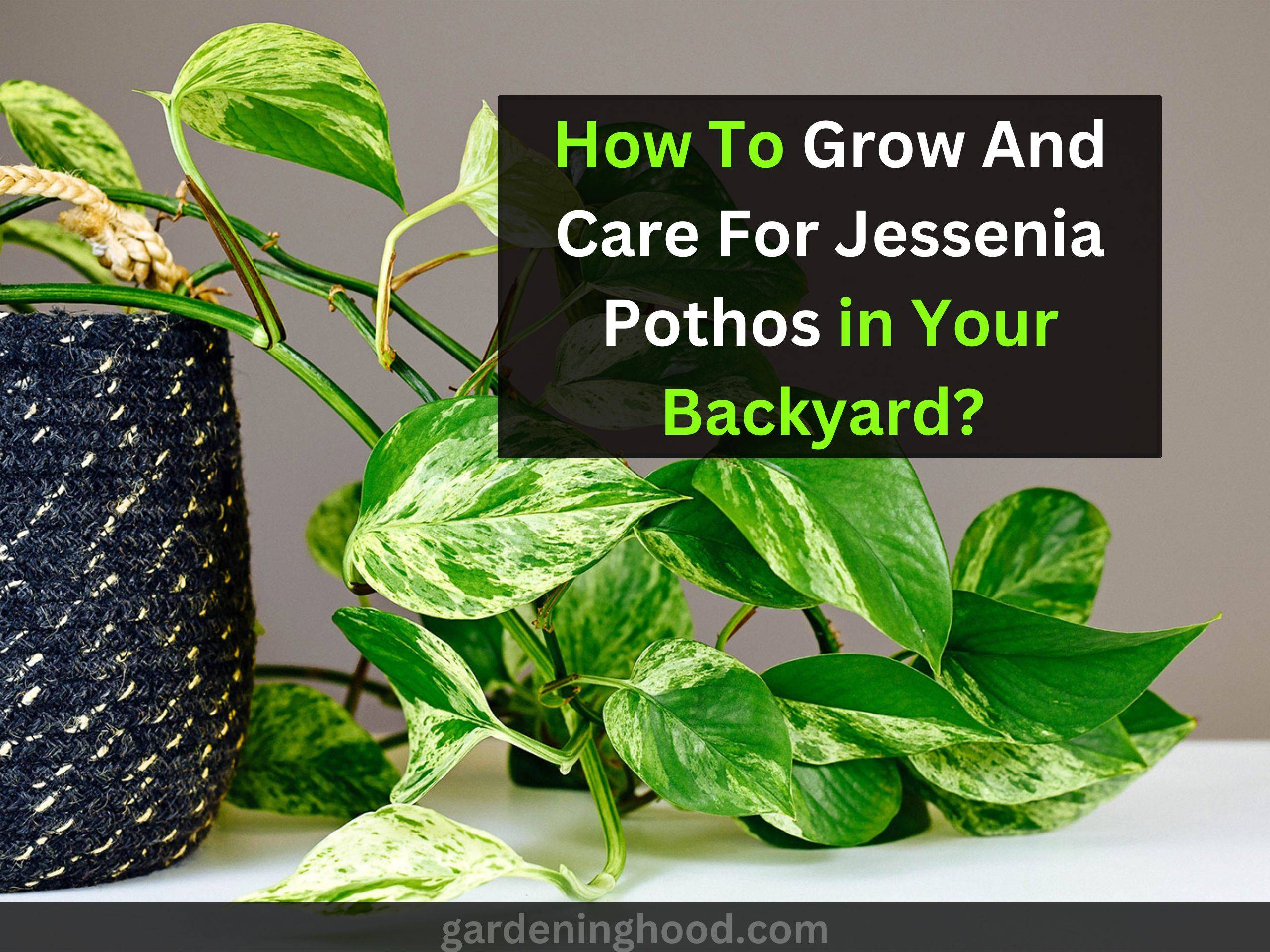8 Causes of Pothos Leaves turning Brown (& How to Fix It)
A Pothos(devil’s ivy) plant that was thriving well and shining all green in the spot suddenly started to turn brown, and this is disheartening! We totally understand! Pothos is such an easy-to-grow plant and comes in different varieties like Golden Pothos, Neon Pothos, Pearl’s pothos, etc when it starts to indicate a brown color that means it’s a red signal that the plant is under some kind of stress. We will be acknowledging the readers with some Causes of Pothos Leaves turning Brown in this article as we did in the spider plant.
Quick takeaways:
- Okay, straightly putting it on the plate that the pothos plant is under the stress of watering can be an overwatering or underwatering issue.
- Other than this the reasons can be pests, fertilization problems, Less light, too much light, fungal infections, or other living conditions.
But here’s some good news! You can still get back to the Pothos plant by following the fixations that we will reveal in this article. So let’s first understand what are the causes that are making the leaves go brown on the pothos plant.
Pothos leaves turning brown
- The browning of leaves is actually a discoloration that occurs due to the loss of pigment.
- The pothos showing variegated browning is a hint of ‘pothos in trouble’.
- Many times the leaves of pothos will turn yellow as well due to the same reasons.
Pothos stems turning brown
- Another saddening thing that is browning is seen in the stressed pothos plant’s stem as well.
- When you see these parts getting brown be alarmed and take action as soon as possible to save the Pothos plant.
What are the 8 causes of pothos leaves turning brown?
1. Watering problems
You need to watch out for the watering schedule as you might be overwatering or underwatering the Pothos plant. If the pothos plant is overwatered then there is a risk of root rot.
The roots of the affected plant will not get nutrients properly to do photosynthesis. The roots also get suffocated due to overwater soil as the lack of oxygen occurs. The least aeration in the soil can cause trouble for the roots and also for the whole plant.
Even the underwater pothos plant is at risk of dying. The plant will dry out, leaves start to show spots and droop. The whole leaves then turn brown if the soil is not watered properly. If the soil has too much sand that will keep the soil dry too.
How to fix this?
- Analyze the top inch of the soil if it is dry or wet. If the soil feels dry to the touch then water the plant and if the soil is still moist then avoid watering.
- Avoid watering the plant if it is already watered by rain.
- Work on the drainage of the soil as the waterlogged soil will Deteriorate the roots and call for infections.
- Repot the plant in case of root tot after discarding the affected roots.
2. Excess sunlight
The sunlight that is too harsh and strong can easily lead to sunburn of the leaves. The brown spots will appear affecting the pigment which later on shows the whole brown surface of the leaves.
The sunlight that is direct and bright can be dangerous for pothos plants. The plant if placed in the wrong sun-facing window can also be the issue that the sunlight is too strong for pothos. some best west sun-facing plants are Philodendron, Peace lilies, Fiddle leaf figs, Croton plants, etc.
How to fix this?
- The pothos plant needs sunlight but not that long.
- The morning sun helps them in growing well and healthy.
- The indirect sunlight for 3-4 hours is absolutely fine for the pothos plants.
“Gardeners, I think, dream bigger dreams than emperors”
– By Mary Cantwell
3. Low humidity
The pothos plant needs humidity to give that shiny glossy leaves. They need about 50-70 percent of humidity. The browning leaves appear if the plant is growing in a dry atmosphere.
The air should be moist and conditions should be warm for healthy pothos. Check the spots if they are too dry, the leaves droop, and the surface of the leaves feels dry if the humidity is low.
How to fix this?
- Maintaining the humidity level is necessary in the case of pothos plants.
- Use a humidifier to increase the humidity or place the ant in the bathroom or near the kitchen.
- You can also mist the plant if the plant looks dry one time a week or two.
- But make sure to spray the plant in the morning so that plant leaves get time to dry.
4. Poor soil
If the soil is not of good quality yellow or brown spots on the leaves will appear. The soil pH should be optimum and the drainage should be good. The pothos plant needs a good potting mix.
The soil that has poor drainage can lead to waterlogging and even reduce the root’s ability to absorb water properly. The soil looks damp most of the time which can be due to poor drainage. The water should easily pass through the soil.
How to fix this?
- Add a little perlite, and sand to the soil to increase drainage of the soil.
- Make the drainage holes in the pot and use porous soil with less clay in it.
5. Overfertilization
The pothos plant will get a burn if they are overfertilized. The plant doesn’t demand too much fertilizer. They can easily be overfertilized. The wilting of leaves, yellowing, and browning of leaf tips occur if the issue is over-fertilization.
How to fix this?
- Use a good quality fertilizer and try to keep it to one time a month only to fertilize the pothos plants.
6. Pests
Pest infestations can be the reason for creating trouble for pothos plants which in turn indicate discoloration. Pests are creatures that suck the sap from the plant and make them weak.
They usually attack the leaves and stems of the plant. Aphids, mealybugs, thrips, spider mites, etc pests can affect the pothos plant and make them malnourished.
How to fix this?
- Use neem oil spray over the pest to kill them.
- Spray beneath the leaves as well.
- Use organic pesticides and soap solution sprays if you want.
- These will help in deterring the pests.
7. Temperature fluctuations
The temperature if it is too cold or too hot can be harmful To the pothos Plants. They get easily shocked by temperature fluctuations.
The temperature should be in the range of 70 to 90 degrees Fahrenheit. Usually, the browning of leaves will occur if the temperature gets too. Low that is below 70 degrees Fahrenheit.
How to fix this?
- If the temperature drops you can use the heater to heat up the area, and make sure you give sunlight to the pothos plant.
- If the temperature is too high, put the plant in a cold area like a store room, in the shade, etc.
8. Diseases
The last reason can be a disease that can easily spot weak or stressed pothos plants. Many fungal diseases can occur due to fungal growth that might have occurred due to soggy soil, and poor drainage. Bacterial leaf spot is a disease that mainly causes brown spots on the leaves of pothos.
How to fix this?
- Check the soil condition if it is not moldy and if the Stem does not appear mushy.
- The soil should have proper aeration and drainage. Make sure the humidity is under control.
Wrap-up of the context
This article was all about making you aware of the lead causes that make the leaves of pothos brown, brown tips, and even the yellowing of leaves. A gardener should know the reasons and related treatments to get their pothos plant thriving well and growing long and long. Pothos are a really beautiful addition to your home and no one would like to see brown lifeless leaves instead of green leaves. We hope you find this article useful and we are happy to help.
Happy caring and growing!


